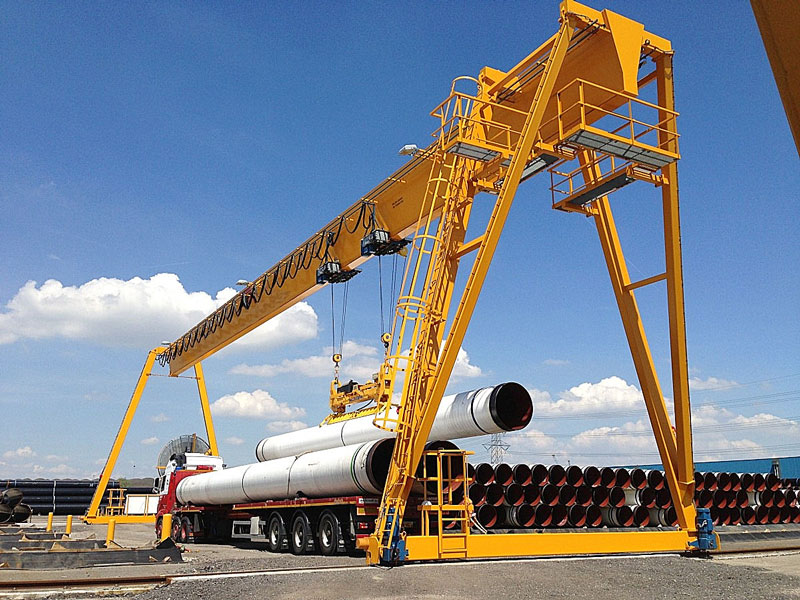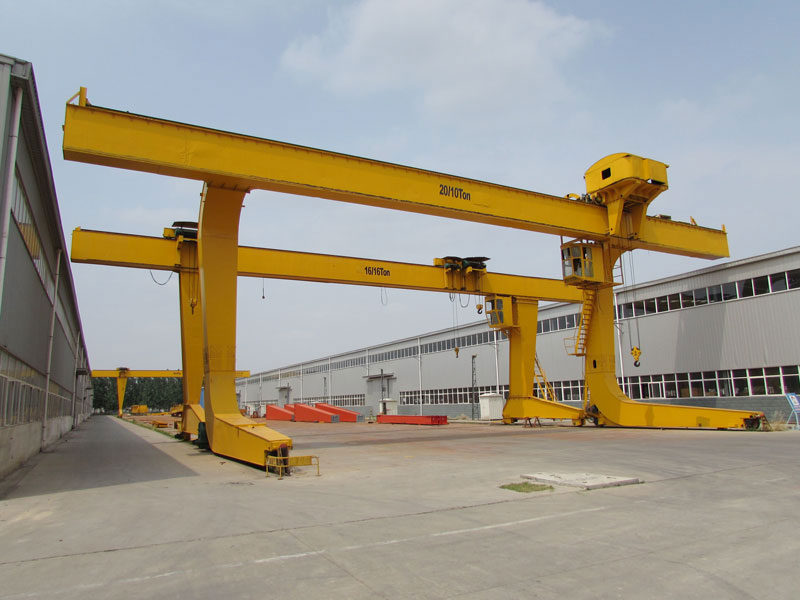A gantry crane is a type of crane that is commonly used in construction sites, shipping yards, warehouses, and other industrial settings. It is designed to lift and move heavy objects with ease and precision. The crane gets its name from the gantry, which is a horizontal beam that is supported by vertical legs or uprights. This configuration allows the gantry crane to straddle or bridge over the objects being lifted.
Gantry cranes are known for their versatility and mobility. They can be either fixed or mobile, depending on the specific application and requirements. Fixed gantry cranes are typically installed in a permanent location and are used for lifting and moving heavy loads within a specific area. Mobile gantry cranes, on the other hand, are mounted on wheels or tracks, allowing them to be easily moved around to different locations as needed.
Foundation inspection and track inspection of gantry cranes
- Check the gantry crane track foundation for settlement, breakage and cracking.
- Inspect the tracks for cracks, severe wear and other defects.
- Check the contact between the track and the track foundation, and it must not be suspended from the foundation.
- Check whether the track joints meet the requirements, generally 1-2MM, 4-6MM is appropriate in cold areas.
- Check the lateral misalignment and height difference of the track, which should not be greater than 1MM.
- Check the fixation of the track. The pressure plate and bolts should not be missing. The pressure plate and bolts should be tight and meet the requirements.
- Check the track connection plate connection.
- Check whether the longitudinal slope of the track meets the design requirements. The general requirement is 1‰. The whole process is no more than 10MM.
- The height difference of the same cross-section track is required to be no more than 10MM.
- Check whether the track gauge is too deviated. It is required that the deviation of the track gauge of the large car does not exceed ±15MM. Or determine according to the parameters in the gantry crane operating instructions.
Steel structure part inspection of SEVENCRANE gantry crane
- Check the tightening condition of the connecting bolts of the gantry crane leg flange.
- Check the connection of the connecting planes of the leg flange.
- Check the weld condition of the outrigger connecting flange and outrigger column.
- Check whether the pins connecting the outriggers to the tie rods are normal, whether the connecting bolts are tight, and whether the tie rods are connected to the ear plates and the outriggers by welding.
- Check the tightening of the connecting bolts between the lower beam of the outrigger and the outrigger and the tightening of the connecting bolts between the lower beams.
- Check the condition of the welds at the welds of the beams under the outriggers.
- Check the tightness of the connecting bolts between the cross beams on the outriggers, the outriggers and the main beam.
- Check the condition of the welds on the beams and welded parts on the legs.
- Check the connection condition of the main beam connection parts, including the tightening condition of the pins or connecting bolts, the deformation of the connecting joints, and the welding conditions of the connecting joints.
- Check the welds at each welding point of the main beam, focusing on whether there are tears in the welds on the upper and lower chords of the main beam and the web bars.
- Check whether the overall main beam has deformation and whether the deformation is within the specification.
- Check whether there is a large height difference between the left and right main beams and whether it is within the specification.
- Check whether the cross-connection between the left and right main beams is connected normally, and check the welding seam of the cross-connection lug plate.
Inspection of gantry crane main hoisting mechanism
- Check the wear and cracking of the running wheel, whether there is serious deformation, whether the rim is seriously worn or there is no rim, etc.
- Check the condition of the trolley’s running track, including track seams, wear and damage.
- Check the lubricating oil condition of the traveling part reducer.
- Check the braking condition of the traveling part.
- Check the fixation of each component of the traveling part.
- Check the fixation of the hoisting wire rope end on the hoisting winch.
- Check the lubrication condition of the hoisting winch reducer, including the capacity and quality of the lubricating oil.
- Check whether there is oil leakage in the hoisting winch reducer and whether the reducer is damaged.
- Check the fixation of the reducer.
- Check whether the hoisting winch brake is working properly.
- Check the brake clearance, brake pad wear, and brake wheel wear.
- Check the connection of the coupling, the tightening of the connecting bolts and the wear of the elastic connectors.
- Check the tightness and protection of the motor.
- For those with hydraulic braking systems, check whether the hydraulic pump station is working normally, whether there is oil leakage, and whether the braking pressure meets the requirements.
- Check the wear and protection of the pulleys.
- Check the fixation of each component.
To sum up, we must pay great attention to the fact that gantry cranes are used a lot and have many safety hazards on construction sites, and strengthen the safety supervision and management of all aspects of the manufacturing, installation and use of gantry cranes. Eliminate hidden dangers in time to prevent accidents and ensure the safety of gantry cranes.









